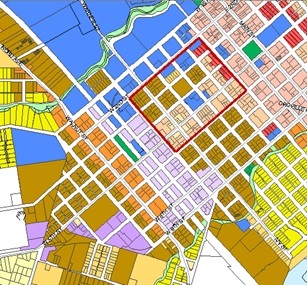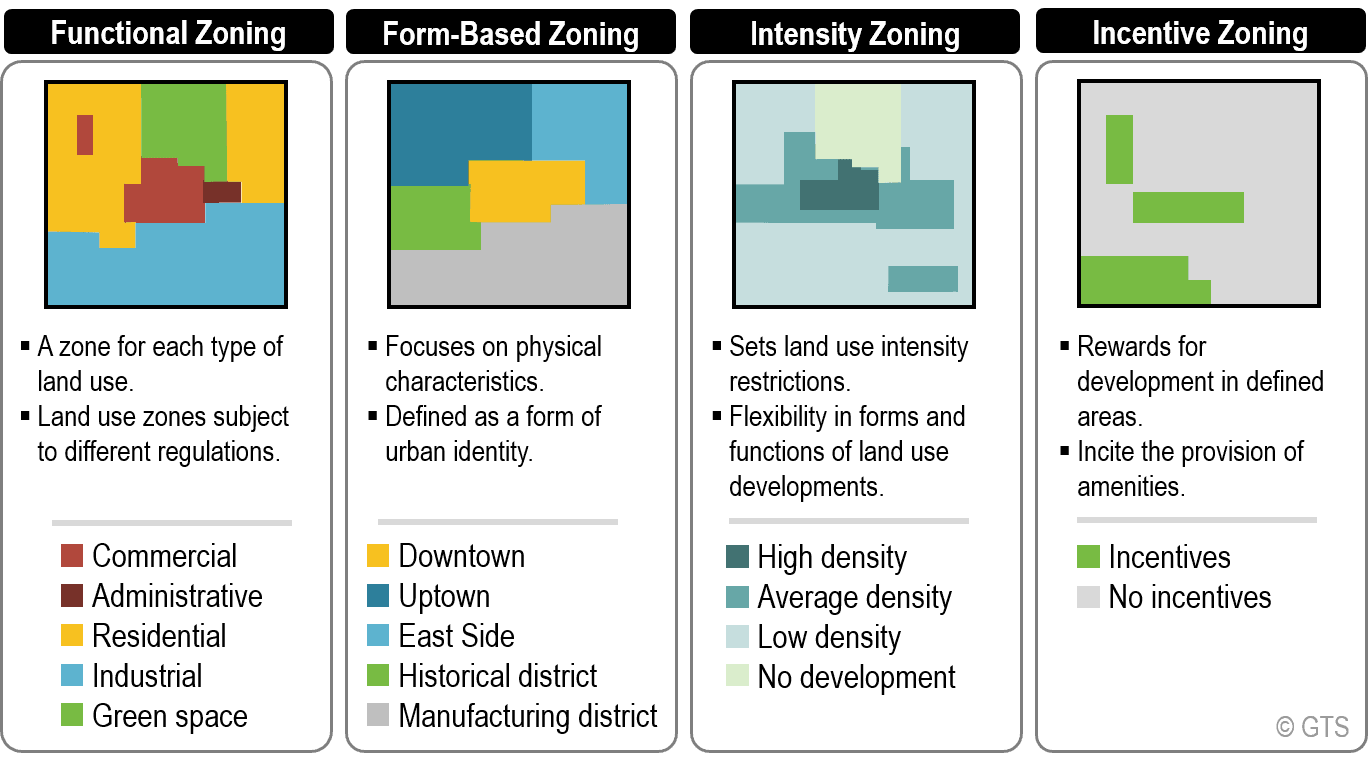Describe the Type of Zoning Typically Seen in Urban Environments
Companies are obliged to know about the peculiarities of zoning in a specific locality. Loss of wildlife habitat is another especially of wetlands that are easily filled in to provide more flat land but also of forests parklands and open.
Intensity Zoning Defined by level of permitted intensity.

. This is an example of intensity zoning where a certain number of residential units are. The general fabric of the city falls under R1 or R2 zones which are mixed residential zones. Towns usually have local self-government and they may grow around specialized economic activities such as mining or railroading.
Zoning laws typically specify the areas. Other Apps - April 16 2022 What Are The Different Types Of Land Zoning Millman National Land Services What Is Zoning In Urban Planning Objectives And Advantages Of Zoning Pin On Mobility What Is Zoning Urban Omnibus. For instance one is prohibited from building a factory within a residential area.
Reflect back on the residential land use that is split between high medium and low density housing. Zoning codes can be simple or complex. Some geographers further define a town as having 2500 to 20000 residents.
However in many metropolitan areas it. Zoning is the way that governments supervise land development and the kinds of uses each individual property may be directed toward for the public interest. Functional zoning is the most prevalent of the four and these zones are defined according to how the property functions whether as a commercial residential or industrial property.
Everything either fits into one of those or gets integrated as some sort of overlay. Low-density land use is typically seen as 4 or less units per net acre. Industrial zoning usually distinguishes between light industry heavy industry and warehouse.
Zoning laws are written to support original holders of land and other property. Residential building types set out in the By-law that relate to the scope of these Guidelines mainly include Townhouse and Apartment Buildings and to a lesser degree Triplexes and Fouplexes. Economies with an efficient and effective zoning process make zoning maps of cities accessible to builders.
These may be further divided into single- andor two-family and multi-family and by lot size. For residential neighborhoods to keep them cleaner and quieter. The transect defines a series of zones that transition from sparse rural farmhouses to the dense urban coreEach zone is fractal in that it contains a similar transition from the edge to the center of the neighborhood.
Zoningthe process of planning for land use across geographic areascan help avoid the mixing of incompatible land uses. Anywhere people live houses apartment buildings often takes up 40 of a cities area residential density is the number of housing units per hectare. In general the major types of zones they describe include.
The transect is an important part of the New Urbanism and smart. Think of downtown areas. When you look at land uses and zoning codes in other cities you usually see a whole host of them.
R3 is a more restrictive residential zone usually found on the periphery of the city where higher intensity of development is not encouraged. In New York there are really just three designations. Residential commercial and manufacturing.
Homeowners do not want to see near their ugly mansions or deal with riots about the construction of an unwanted factory. Urban sprawl also called sprawl or suburban sprawl the rapid expansion of the geographic extent of cities and towns often characterized by low-density residential housing single-use zoning and increased reliance on the private automobile for transportation. The City-wide Comprehensive Zoning By-law 569-2013 as amended defines and regulates residential building types within zone categories.
This type of urban planning envisions a future state for a given space and what it will take to achieve that vision. This has both environmental and economic benefits. Cities will usually have more than one type of land use zone.
There are four main types of land use zoning. Zoning may include regulation of the kinds of activities which will be acceptable on particular lots such as open space residential agricultural commercial or industrial the densities at which those activities can be performed from low-density housing such as single family homes to high-density such as high-rise apartment buildings the height of buildings the amount of space. There are many negatives associated with urban sprawl and the coverage of prime agricultural areas is just one of them.
Earth Science Science Geography. Merchants services entertainment restaurants lodging. Zoning and a Business.
Institutional uses open space etc. We first discuss the history of zoning and planning in this country and their con-tribution to inequitable development and urban fragmentation. Form-based Zoning This is zoning based upon physical characteristics or urban identity.
Zoning practices vary widely around the world. Urban planners must consider the required zoning from your land-use plan and infrastructure see concept 7 below to make the project possible such as residential and commercial land transportation considerations road locations etc. We then describe how the distribution of resources within and between neighborhoods has an impact on neighborhood health by linking neigh-.
Other types of zoning used in some municipalities include historic school hospital and. The zoning laws give a clear definition of the residential zone commercial zones and the recreational areas. The urban-to-rural transect is an urban planning model created by the New Urbanist Andrés Duany.
A town is generally larger than a village but smaller than a city. One type of urban area is a town. Describe the Type of Zoning Typically Seen in Urban Environments Get link.
Urban sprawl is caused in part by the need to accommodate a rising urban population. The main types of zoning are industrial commercial residential and agricultural. Describe the type of zoning typically seen in urban environments.
Zoning is also important so as to avoid inconveniences and dangers posed to the residents occupying a certain area. 6 Urban Land Uses 1 Residential Land Use.

What Is Zoning In Urban Planning Objectives And Advantages Of Zoning


No comments for "Describe the Type of Zoning Typically Seen in Urban Environments"
Post a Comment